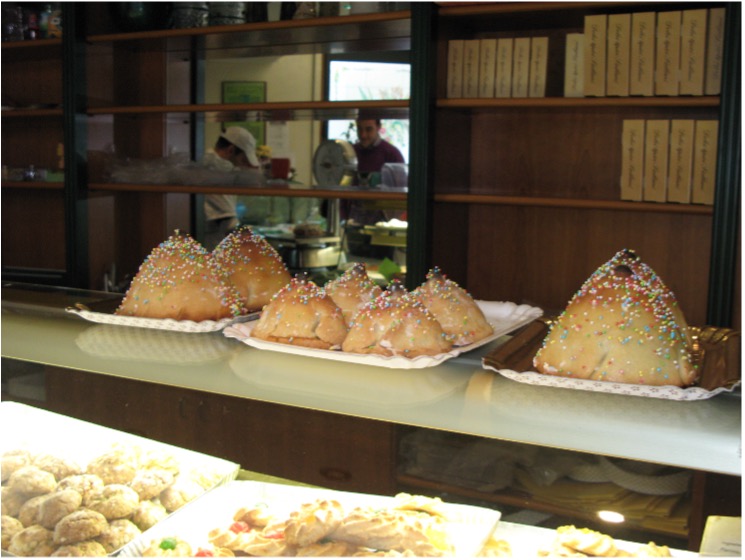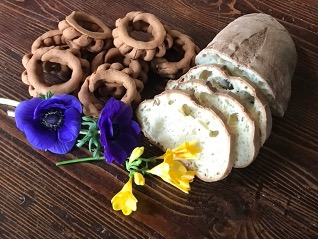Travel restrictions are easing, the time has come to explore an interesting and little-visited part of Sicily, at its best in spring, with the meadows full of wild flowers; a place of great beauty, surprising places and people, and delicious food. A good base for your visit would be the village of Montallegro, conveniently situated halfway between Agrigento and Sciacca. Relais Briuccia is a lovely little hotel, very comfortable, with a top-class restaurant where chef Damiano Ferraro creates exquisite Sicilian haute-cuisine dishes. Damiano and Adriana will help you plan your itinerary. Don’t forget your Blue Guide Sicily!
After visiting Agrigento, a ‘must’ with its stunning array of UNESCO-protected Greek temples and one of the most important monumental areas in the Mediterranean, don’t miss Sciacca, with a renowned fish market, and where local craftsmen still work coral, for example Conti (Piazza Matteotti 10).
In a lovely pinewood setting, by a long beach of white sand, Herakleia Minoa will fascinate those who enjoy archaeological sites. Its history is wreathed in misty legends involving Crete, King Minos and Queen Pasiphaë, a white bull, the Athenian artist Daedalus, the Minotaur, Theseus, and Ariadne. Imprisoned in the labyrinth by the infuriated Minos, Daedalus made wings of wax and feathers for himself and his son Icarus, so they could fly to freedom, but Icarus flew too close to the sun, his wings melted and he fell into the sea and drowned. Daedalus landed here, become court inventor to the local king Cocalus, and married his six daughters. The girls killed Minos in his bath when he came to capture the renegade, and they all lived happily ever after, except Ariadne who was abandoned by Theseus on the island of Naxos. Read about it in Vincent Cronin’s The Golden Honeycomb.
At the Pendola pastry shop (Cortile Baglio Grande 42) in Sambuca di Sicilia you will find the minni di virgini, delicate little pies filled with confectioner’s custard, candied pumpkin and chocolate chunks, invented by a nun, Suor Virginia, in 1725 to celebrate the wedding of the town’s lord and master, Marquis Pietro Beccadelli.

Burgio is a small town with lovely carved stone portals, not only on churches and palaces, but even on the most humble dwellings. Here you will find ceramics workshops producing practical vases and storage jars quite different from those made in other areas of Sicily. The greeny-blue and yellow colours and the designs are muted, to please hard-working country folk. You can visit the 500-year-old bell foundry, and the Mummy Museum: mummification was once the privilege of Church fathers, aristocrats and the wealthy, and the local Capuchin monks were masters of the art.
The little farming community of Delia has an interesting, closely-knit centre, where people live close together in a friendly way, sharing joys, problems and celebrations as they come along. Ask someone to help you find a tiny pastry shop, Alaimo e Strazzeri (Viale Pietro Nenni 6, T: 00 39 329 9781853) for the traditional biscuits made only in this town. Called cuddrireddra, little crowns, they were made to delight medieval ladies forced to live alone in the draughty castle on the outskirts while their men were away fighting in the Crusades.
Borgo Santa Rita is an old semi-abandoned farming village with only 12 inhabitants, set in a glorious hilly landscape and surrounded by vineyards, wheat-fields, and bounteous orchards of apricots, peaches and plums. Here you will find the bakery of award-winning Maurizio Spinello, for the best sourdough bread. Stock up on his pasta and locally-milled flour.

Nature lovers will appreciate the Torre Salsa Wildlife Reserve, close to Siculiana. A spectacular stretch of coast with white cliffs, dunes, deep blue sea, Mediterranean maquis vegetation, and beaches where the loggerhead turtle nests.
If your weekend on the island makes you feel you would like to live here forever, in many of the little towns in Sicily you can buy a house at the symbolic price of one euro. Of course there are certain conditions, for example some councils require you to deposit as insurance a sum of money which will be returned on completion of the renovations, for which you are granted a generous amount of time. Other councils want you to reside in your house, and become a citizen of their commune; after all the initiative was launched in order to counter the abandonment of these ancient centres, hundreds of years old, with tiny cobbled streets often inaccessible by car. Local people must be called in to do the repairs, and materials must be purchased in Sicily. Beautiful surroundings, good food, clean air and friendly people will surely compensate for the inconvenience and the enormous patience you will need. At the moment, one-euro houses are available in Delia, Racalmuto, Sambuca, Bivona, Mussomeli and Cammarata.
Words and photos by Ellen Grady, author of Blue Guide Sicily






